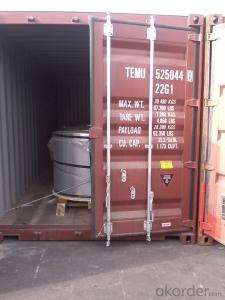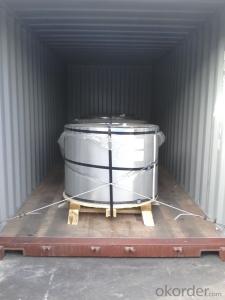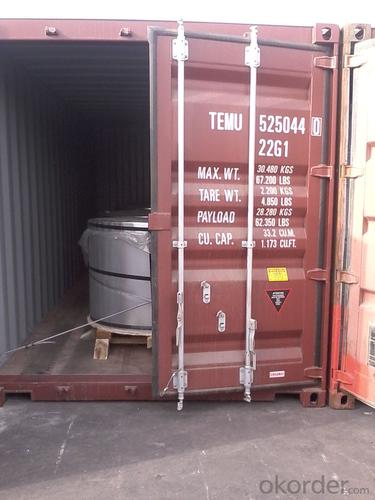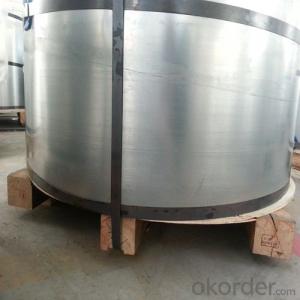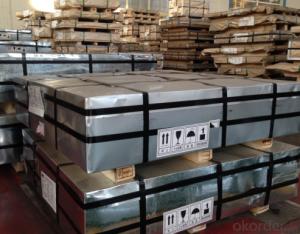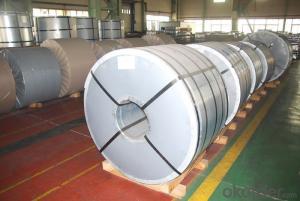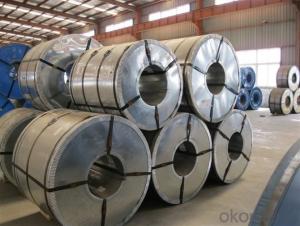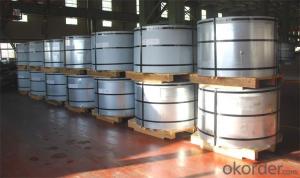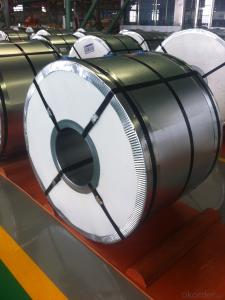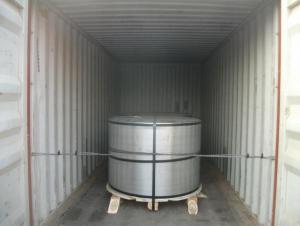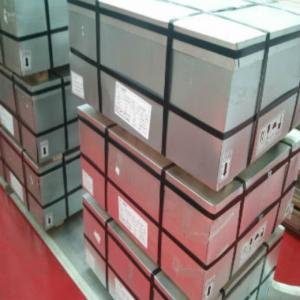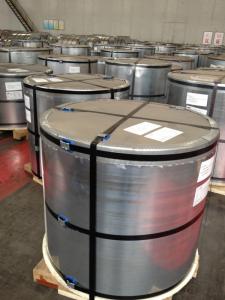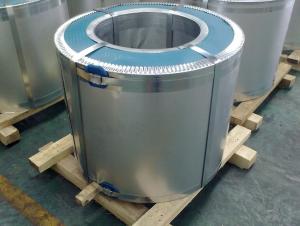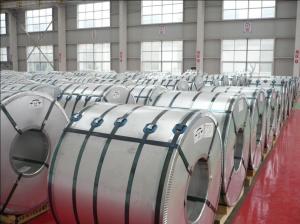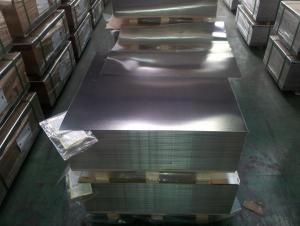Tinplate Sheets or Coils for Metal Package
- Loading Port:
- Qingdao
- Payment Terms:
- TT OR LC
- Min Order Qty:
- 25 m.t.
- Supply Capability:
- 30000 m.t./month
OKorder Service Pledge
OKorder Financial Service
You Might Also Like
1.Structure of Tinplate Sheets or Coils for Metal Package Description
Electrolytic Tinplate is a thin steel sheet coated by tin. It has an extremely beautiful metallic luster as well as excellent properties in corrosion resistance, solder ability, and weld ability.
2.Main Features of the Tinplate Sheets or Coils for Metal Package
Electrolytic Tinplate undoubtedly enjoys the pride of place as a packaging medium especially for food. It owes its unique position to its "nine layer sandwich structure", each of which contributes to its eminence as a packing material. The steel base of electrolytic tinplate provides the necessary strength and formability for can fabrication. The tin-iron alloy layer provides the bond between the steel and free tin layer. The free tin layer is not only responsible for the attractive bright finish and ease of solderability but is also non-toxic- a factor of vital importance in food packaging!
Tinplate is also widely used for making all types of containers such as food cans, beverage cans, and artistic cans, tea cans, painting cans, chemical package cans and dry food package cans, metal printing etc. Its applications are not limited to containers; recently, electrolytic tinplate has also been used for making electrical machinery parts and many other products.
3.Tinplate Sheets or Coils for Metal Package Images
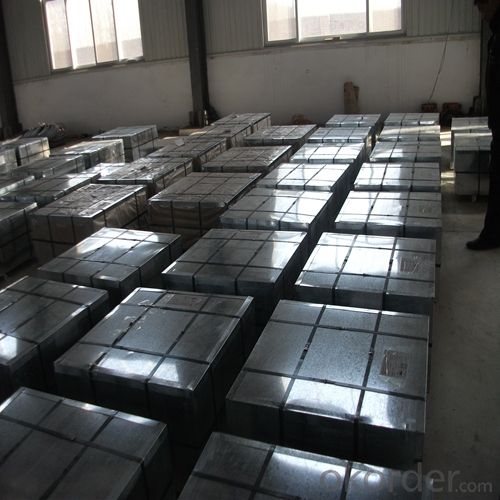
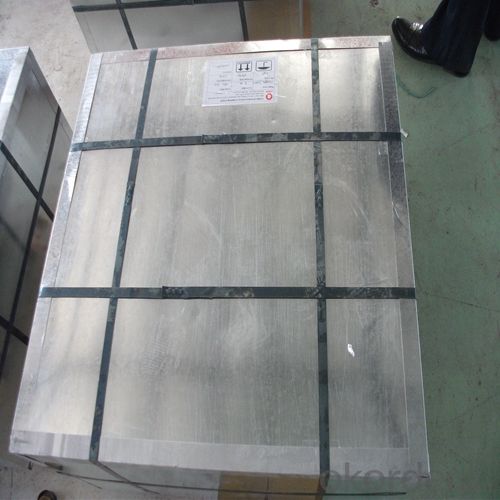
4.Tinplate Sheets or Coils for Metal Package Specification
Standard:BS EN 10202
Material: SPCC
Thickness:0.28mm
Width:785mm
Temper: T4
Annealing: CA
Coil Inner Diameter: 508mm
Weight: 6-10 tons/coil
Passivation:311
Oil: DOS
Surface: silver
5.FAQ of Tinplate Sheets or Coils for Metal Package :
1. What is the delivery time for your prime quality tinplate?
Usually 35 days after order confirmation.
2. What is your Minimum Order Quantity?
Usually MOQ is 50tons for one single size, for trial order, it can be 25 tons.
3. What is the payment term?
The most common we use is L/C at sight or TT. We can also try use other terms.
- Q: Can tinplate be customized with different designs or logos?
- Yes, tinplate can be easily customized with different designs or logos. Its smooth surface allows for high-quality printing, making it an ideal choice for branding and promotional purposes.
- Q: How does tinplate contribute to the durability of stationery products?
- Tinplate contributes to the durability of stationery products by providing a protective and corrosion-resistant coating. This coating helps to prevent moisture and other environmental factors from damaging the stationery items, ensuring they have a longer lifespan and remain in good condition for a longer period of time. Additionally, the strength and rigidity of tinplate make it resistant to bending or warping, further enhancing the durability of stationery products.
- Q: Can tinplate be used for packaging of chemicals?
- Yes, tinplate can be used for the packaging of chemicals. Tinplate is a durable and corrosion-resistant material that can withstand the harsh conditions and potential reactivity of certain chemicals. It provides a protective barrier against moisture, oxygen, and light, ensuring the integrity and safety of the packaged chemicals. Additionally, tinplate is also recyclable, making it an environmentally friendly choice for chemical packaging.
- Q: How is tinplate affected by exposure to moisture?
- Tinplate is highly susceptible to corrosion when exposed to moisture. The presence of water triggers a chemical reaction, causing the tin coating to deteriorate and exposing the underlying iron to oxidation. This can result in rust formation and compromise the integrity of the tinplate. Therefore, it is crucial to protect tinplate from prolonged exposure to moisture to ensure its longevity and prevent potential damage.
- Q: Tin can weldingHow can the side of the column of the pop top be welded or pressed?,
- The iron material thickness uniformity in the welding process, welding voltage and high requirement of control, the slightest mistake will cause breakdown or welding point is easy to fall off. As for the production of specific steps, personal suggestions to the scene you see, because the whole process is relatively simple, and when it comes to the production process and principle very boring, tedious. So, if you just want a rough understanding, there is no need for this.
- Q: Can tinplate be used for packaging products with specific storage requirements?
- Yes, tinplate can be used for packaging products with specific storage requirements. Tinplate is known for its excellent protective properties, including resistance to moisture, oxygen, and light, which makes it suitable for preserving the quality and freshness of various products. Additionally, tinplate is highly durable and can withstand temperature variations, making it ideal for packaging products with specific storage needs.
- Q: What are the main challenges in the disposal of tinplate products?
- The main challenges in the disposal of tinplate products include the need for proper recycling infrastructure, as tinplate is a complex material to separate and recycle. Additionally, ensuring the collection of tinplate products from various sources can be a logistical challenge. Furthermore, the presence of any hazardous materials or coatings on the tinplate can pose environmental risks if not managed properly. Lastly, promoting awareness and educating consumers about the importance of responsibly disposing of tinplate products can also be a challenge.
- Q: What is the tin plated iron?
- In the galvanic cell of the tin, iron is negative and oxidized because iron is more active than tin.Therefore, in the coating damage, corrosion resistance than tin tin.
- Q: How does tinplate compare to other packaging materials in terms of shelf appeal?
- Tinplate stands out among other packaging materials in terms of shelf appeal due to its unique metallic appearance, which adds a sense of premium quality and attractiveness to the product. Its high gloss finish and ability to be printed with vibrant colors and intricate designs make it visually appealing, catching the attention of consumers and stimulating their interest. Additionally, tinplate offers excellent durability and protection, ensuring that the product remains in pristine condition on the shelf, further enhancing its shelf appeal.
- Q: How does tinplate compare to aluminum packaging in terms of cost?
- Tinplate packaging generally tends to be more cost-effective compared to aluminum packaging. Tinplate is a durable material that is made from thin sheets of steel coated with a layer of tin, making it a cost-efficient option for packaging. On the other hand, aluminum packaging is lightweight and provides excellent barrier properties, but it is typically more expensive due to the higher cost of aluminum as a raw material.
Send your message to us
Tinplate Sheets or Coils for Metal Package
- Loading Port:
- Qingdao
- Payment Terms:
- TT OR LC
- Min Order Qty:
- 25 m.t.
- Supply Capability:
- 30000 m.t./month
OKorder Service Pledge
OKorder Financial Service
Similar products
Hot products
Hot Searches
Related keywords
